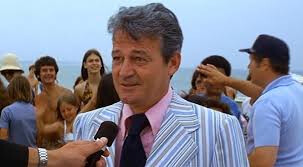"Theoretically, a vaccine should stop both the infection as well as the transmission and spread,” said Dr. Purvi Parikh, an immunologist with the nonprofit Allergy & Asthma Network and a co-investigator on the Pfizer vaccine trials.
But we don’t know yet if that is true of the COVID-19 vaccines, she told me. That’s because the focus of the clinical trials was narrow. It had to be because of the time constraints. Scientists wanted to know whether these things prevented illness. They wanted to know whether the drugs were safe. And they got those answers.
But getting those questions answered fast came at the expense of answering other questions — like whether vaccinated people can still spread the virus. “With a lot of other vaccines, you have years of data to analyze that,” Parikh said.
So, experts are being careful — balancing their excitement and relief with caution that you can’t just switch off 2020 Mode and return to a normal state of being. They need a little more time to know for sure.
If someone was protected from symptoms of COVID-19 but still capable of spreading it, it wouldn’t be that shocking. There’s a hypothetical mechanism that could allow this to happen biologically, said Deepta Bhattacharya, a professor of immunobiology at the University of Arizona. And that mechanism is … well … it’s boogers and phlegm.
“So, the virus enters in through the upper respiratory tracts, either through your nose or your throat. And those are protected by a mucous layer. And so that mucous layer is good at slowing things down from getting into you. But it also acts as a barrier for things like antibodies, and certainly for cells from getting out and meeting the virus as it comes in,” he said.
Even if a vaccine has trained your immune cells to kick the butt of any SARS-CoV-2 viruses they spot, they might not be able to neutralize the ones resting in your nose, on the other side of your mucous barriers. Those COVID-19 viruses wouldn’t hurt you, but they still might be able to replicate and shed — coughed back out of your nose and mouth and into the community, where they could encounter your unvaccinated friends and loved ones.
We also have at least one example of a vaccine that can end up protecting the vaccinated person more than the community at large, Parikh told me. The flu vaccines are notoriously imperfect in how well they protect against infection, as effectiveness rates fluctuate but tend to be between 40 and 60 percent. That’s better than nothing for the people who get them — especially because we know that, even if you do get sick, having had the vaccine can result in a less severe illness. But, Parikh said, that means that person — vaccinated, less susceptible, and less sick than they otherwise would have been — can still spread influenza around the community.
That’s the kind of thing scientists are worried about. But they’re also optimistic. “I suspect the answer will be that people will not be able to transmit — that the virus will protect from transmission, because I think there will be enough antibodies made that will neutralize the virus even at the mucosal surface,” said Dr. Warner Greene, senior investigator at Gladstone Institutes, an independent, nonprofit research lab in San Francisco. “But it is just a guess at this point,” he added.
It’s a guess Bhattacharya agreed with. The Pfizer and Moderna COVID-19 vaccines have, after all, turned out to be much more effective than those tricky flu vaccines. “If you have a vaccine that’s 95 percent effective at reducing symptoms, there is no universe in which it wouldn’t also reduce the likelihood of transmission. It’s just not possible,” he said. “So we’re not talking about whether it reduces transmission or not, we just want to get an extent as to how much."
So as I read this they don’t want to rule it out entirely, because there is a biological mechanism that would allow some shedding by a vaccinated individual. But, they are almost certainly less infectious than an unvaccinated person, and, therefore as the number of vaccinated people increases, it becomes harder and harder for the virus to find new hosts, and it burns out.
